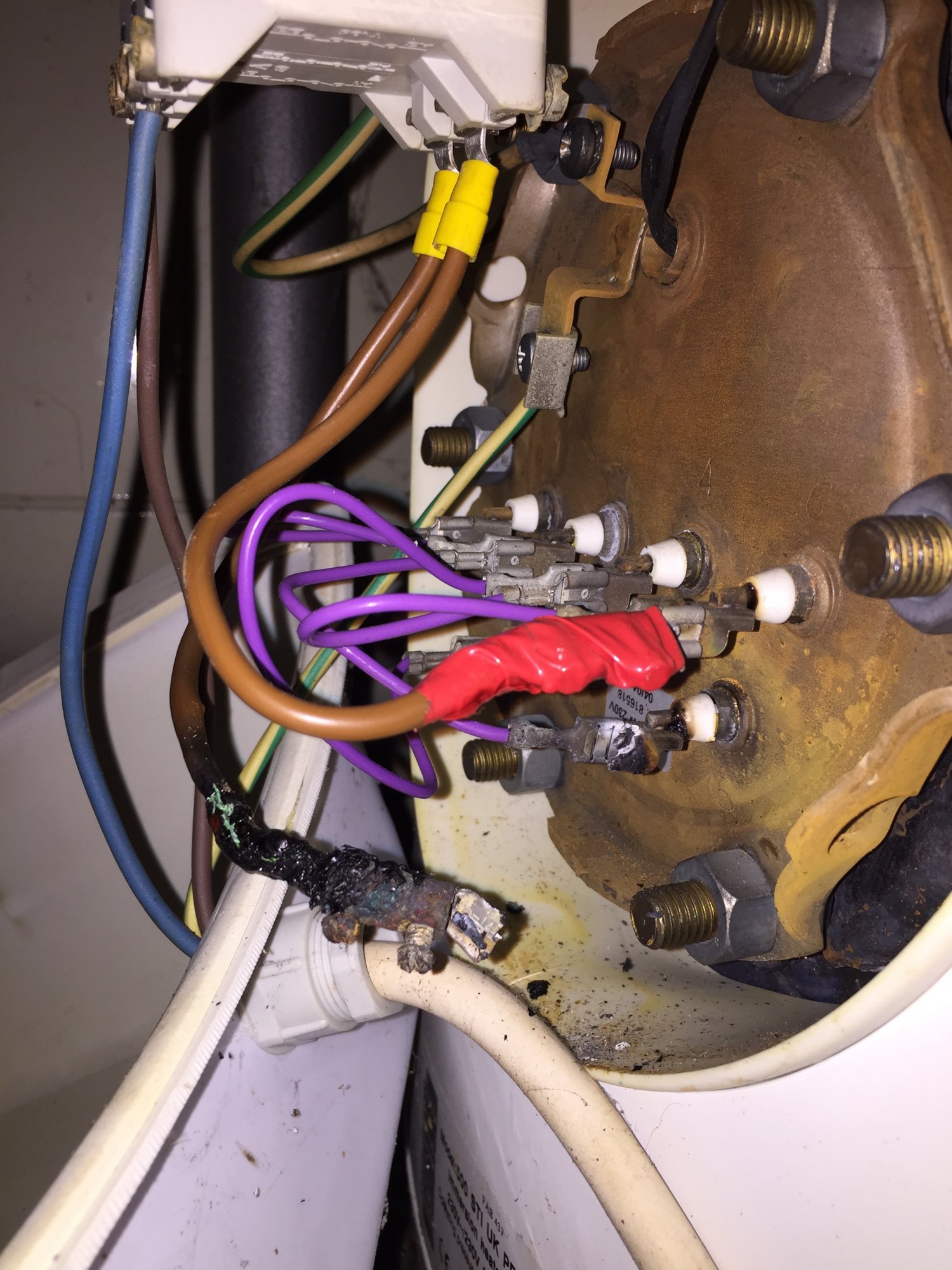Hi. I moved into a new house in feb 15.
The boiler was broken so we decommissioned it and the heating. We reverted to using the immersion heater of the Ariston 500 STI Unvented system for hot water only.
We ran out of hot water today so the immersion heater must have stopped working a couple of days ago.
I've investigated and had a look under the immersion thermostat cover and discovered a corroded/melted terminal. See the photo, the loose wire and terminal are below the red tape.
Now after more investigation I noticed the ProTech anti corrosion device was turned off. Working backwards I worked out the plumber switched it off 4 months ago when he decommissioned the heating and boiler (because it is on the same circuit as the heating water pump).
Could this have caused the electrical terminal problem or is it coincidence? Is the anti corrosion device to stop corrosion inside the cylinder or to stop this? I thought the former.
If the anti corrosion device is not to blame any idea what could have caused this?
Note we've been irregularly turning the immersion off and on to save some electricity.
Finally would the immersion still have worked with this broken wire? I'm wondering if this has been broken for a while and today's problem is something else?
Many thanks



